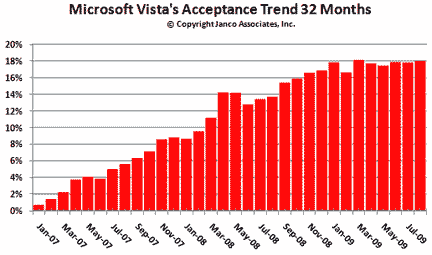 Chrome Gains Browser Market Share
Chrome Gains Browser Market Share
Less than a year and a half after its debut, Chrome's market share in December 2009 was 4.6 percent -- triple its January 2009 share of 1.5 percent, according to Web metrics firm Net Applications.
The browser's increasing popularity has come at the expense of Internet Explorer (IE), which dropped seven points in the same time period, from 69.7 percent to 62.7 percent, according to Net Applications. IE's market share decreased by approximately one percent nearly every month in the second half of 2009.
On a positive note for Microsoft, data shows that IE 8 has nearly become the company's top browser version in use, at 20.9 percent in December, while the eight-year-old IE 6 was at 21 percent.
Chrome's rapidly increasing market share has been helped by Google's extensive advertising on its sites -- including the main search page-- and the recent release of beta editions for Mac and Linux. The browser's December increase of 0.7 percent was the largest since Google launched the browser and may have been partly due to the release of the beta editions.
In addition, Chrome's market share could receive a boost in 2010 with the release of Chrome OS netbooks, which require use of the Chrome OS.
However, Victor Janulaitis, CEO of Janco Associates, said in an e-mail interview that it should not be assumed that Chrome's market share will continue to increase. "We see a tendency of some to balk at the ‘centralization' of control that Google is placing on data and personal information," he said.
If Chrome does continue to increase, it most likely would take from Firefox's market share, as that product seems to be stalled, Janulaitis commented.
In 2009, according to the data, Firefox's share grew from 22.1 percent to 24.6 percent, just short of the 25 percent milestone. In the same period, Safari increased its shares from 3.6 percent to 4.5 percent.
Will there ultimately be a "winner" in the browser competition, or more likely a leveling out for the top browsers? Janulaitis had a prediction: 65 percent IE, 20 to 25 percent Firefox and 10 to 15 percent Chrome.
Based in California, Net Applications measures usage with a pool of about 160 million unique visitors each month, obtained by tracking the systems the company monitors for its clients. Other companies that track browser usage come up with similar trends, though different numbers, such as StatCounter and StatOwl.





